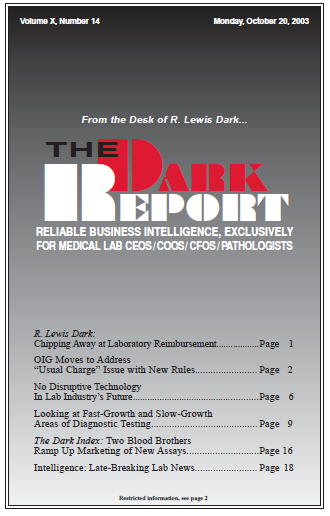CEO SUMMARY: Federal regulators are taking another crack at defining “usual charges.” Language in the proposed rules published last month precisely defines which payers should be included in determining “usual charges” and what charge basis to use for specific payers. Once effective, the new rules will have financial impact on many laboratories, particularly those known …
OIG Moves to Address “Usual Charge” Issue Read More »
To access this post, you must purchase The Dark Report.


